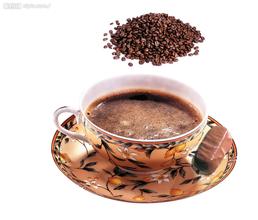Burundi Coffee Flavor Variety Production Characteristics Boutique Coffee Farm Introduction
Le Parti de progressive unification 39; unit é pour le Progr è s National-UPRONA: the Ukrainian Party, founded in January 1959, is the largest political party of the Tutsi nationality. Bu was in power for a long time after independence. After losing the multi-party election in June 1993, he lost his status as the ruling party. After Buyoya returned to power in 1996, the party split, with radicals opposing Buyoya's policy of national reconciliation and refusing peace talks. The National Congress was held in January 2006, in which Aloy Rubuka (Aloys RUBUKA) and Antonova Sisyo (Antoine CISHAHAYO) were elected chairman and vice chairman of the party, respectively. The National Special Congress was held in August 2009, and Nijoyankana (Bonaventure NIYOYANKANA) was elected President. In the National Assembly election in August 2010, the Ukrainian Party won 17 seats, making it the second largest party National Committee for the Defense of Democracy (Conceil National pour la D é fense de la D é mocratie-CNDD). It split from the Democratic Front in October 1994 and originally advocated armed struggle, international military intervention and the restructuring of the Burj Army. In June 1998, Niang Goma participated in the Arusha peace talks, signed the Arusha peace agreement and joined the transitional government. The party chairman, Leonard é onard Nyangoma, is in exile.
Other political parties include the Civil Rights Movement (MRC), the Shield Party (MSP INKINZO), the Hutu people's Liberation Party (PALIPEHUTU), the people's Reconciliation Party (PRP), the people's Party (PP), the gathering Movement for Democracy and Economic and Social Development (RADDES), the people's Alliance of Burundi (RPB), the National Alliance for Rights and Development (ANADDES), the Liberal Party (PL), the Social Democratic Party (PSD), the Workers' Independence Party (PIT), the Buffei Salvation Union (ABASA), National Renewal Party (PARENA), League of visionaries (INTWARI), Burundian Party for Democracy and Reconciliation (PDR), Burundian Alliance for Development Freedom (ALIDE), Burundian New Alliance for Democracy and Development (NADEBU), Burundian Alliance for Peace and Development (UPD), etc.
Burundi coffee was introduced by Belgian colonists in 1930. Unfortunately, many of these farms are on the border with war-torn Rwanda, putting pressure on coffee production.
Coffee producing areas in Burundi:
Coffee in Burundi is now grown only on small farms. Almost all coffee produced in Burundi is Arabian coffee beans, while coffee trees in Ngozi are planted at an altitude of more than 1200 meters.
Features of Burundian coffee:
Burundi has the most diverse and successful coffee industry in the world, and has its own characteristics. Burundian coffee is fragrant and has excellent acidity.
Flavor: mellow taste, rich aroma, excellent acidity
Suggested baking method: medium to deep baking
★★: good
Burundian coffee market:
Most of Burundi's coffee products are exported to the United States, Germany, Finland and Japan.
The coffee production type of Bloomberg is similar to that of Yisuobi, and most of them are produced by small ones. Farmers in the Nielu Deer Co-operative Society (Nyarunasi Cooperative) send their harvested ripe fruits to the processing system for unified treatment.
The coffee collected by the people is washed and processed with traditional water. After the fruit is removed, the coffee is soaked and washed in the sink and placed on the scaffolding to be dried every day. Coffee beans are almost full of defective beans, the size is equal to the water content.
After baking with high maturity, the bean noodles show a bright baking color, and the taste is wild and preserved.
Strong taste and fragrance, fragrance and fragrance are different from most of the coffee in the market.
There is a very high level of gold. The fragrance of dried incense is so strong that it is more colorless than it is, and you can feel it at the entrance.
Very melancholy, vanilla-like taste, wild feeling, dark coffee, low acidity, low acidity
It is slightly easier than Ken, and it has the inherent characteristics of non-bean, and it is also special.
Taste features: honey, kumquat, purple mackerel flower fragrance, acidity, smooth taste, fragrant and sweet,
Rich through the introduction of the Belgian people, Bloomberg began to grow coffee in 1930, and most of the varieties are bourbon series, and coffee grows on mountains ranging from 1750 to 2000 meters above sea level.

Important Notice :
前街咖啡 FrontStreet Coffee has moved to new addredd:
FrontStreet Coffee Address: 315,Donghua East Road,GuangZhou
Tel:020 38364473
- Prev

Characteristics of Puerto Rican Coffee Variety producing area introduction of Fine Coffee Bean Flavor Manor
Since 1972 the United Nations Special Committee on Decolonization has repeatedly reaffirmed the inalienable right of the people of Puerto Rico to self-determination and independence. In 1977, U.S. president Gerald Rudolph Ford submitted the Puerto Rico statehood Act 1977 to Congress, advocating that Puerto Rico should be turned into the 51st state of the United States. In November 1982, President Ronald Wilson Reagan issued a statement supporting Poland.
- Next

An introduction to the characteristics of fine coffee beans in the manor area
Uganda is the country of origin of coffee grown in Robusta, but commercial cultivation of Arabica species here did not begin until early 1900. Today, there are still a large number of wild robusta coffee trees in Uganda, which is rare in cities in the world. As a landlocked country, the large coffee cultivation in Uganda is often interplanted, where coffee trees are mixed with food crops and rubber trees.
Related
- Detailed explanation of Jadeite planting Land in Panamanian Jadeite Manor introduction to the grading system of Jadeite competitive bidding, Red bid, Green bid and Rose Summer
- Story of Coffee planting in Brenka region of Costa Rica Stonehenge Manor anaerobic heavy honey treatment of flavor mouth
- What's on the barrel of Blue Mountain Coffee beans?
- Can American coffee also pull flowers? How to use hot American style to pull out a good-looking pattern?
- Can you make a cold extract with coffee beans? What is the right proportion for cold-extracted coffee formula?
- Indonesian PWN Gold Mandrine Coffee Origin Features Flavor How to Chong? Mandolin coffee is American.
- A brief introduction to the flavor characteristics of Brazilian yellow bourbon coffee beans
- What is the effect of different water quality on the flavor of cold-extracted coffee? What kind of water is best for brewing coffee?
- Why do you think of Rose Summer whenever you mention Panamanian coffee?
- Introduction to the characteristics of authentic blue mountain coffee bean producing areas? What is the CIB Coffee Authority in Jamaica?

